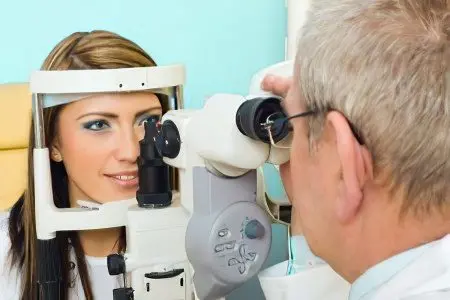Contents
It is a rare ailment that affects one in 5000 people. Pigmentary dystrophy, or retinitis, occurs most often in males. It can happen at any age, including children.
In the vast majority of those who have encountered this form of dystrophy before the age of 20, the ability to read remains unchanged, and the degree of visual acuity is more than 0.1. In the age category from 45 to 50 years, the degree of visual acuity is less than 0.1, the ability to read is completely lost. About the symptoms, causes and treatment of the disease further.
Symptoms of retinitis pigmentosa

The main manifestations of the disease include:
Hemeralopia, or “night blindness” – is formed due to damage to one of the components of the retina, namely the rods. At the same time, the skill of orientation is practically lost in case of an insufficient degree of illumination. It is hemeralopia that should be considered the primary manifestation of the disease. It can occur five or even 10 years before the first obvious manifestations in the retinal area;
Steady degradation of peripheral vision – begins with a minimal narrowing of the boundaries of peripheral vision. As part of further development, it can lead to a complete loss of it. This phenomenon is called tubular or tunnel type of vision, in which only a small “visual” area remains in the center;
Decreased visual acuity and color perception – is noted in the later stages of the disease and is caused by the degradation of cones in the central region of the retina. The systematic development of the disease provokes blindness.
Causes of retinitis pigmentosa
There is only one reason for the appearance of pigmentary dystrophy, in order to understand it, it is necessary to understand the anatomy of the human eye. Thus, the light-sensitive membrane of the eye or retina includes two categories of receptor cells. We are talking about rods and cones, which received such names solely because of their shape. The vast majority of cones are located in the central region of the retina, which guarantees optimal sharpness and color perception. The rods are distributed throughout the retina itself, they control peripheral vision and make it possible to see in low light conditions.
When the specific genes that provide nutrition and function of the retina are damaged, there is a systematic destruction of the outer region of the retina. That is, exactly the one where the rods and cones are placed. Such damage primarily affects the periphery and disappears within 15-20 years. It is this long process that is the only reason for the development of pigmentary dystrophy.
Diagnosis of pigmentary dystrophy of the retina
Carrying out the diagnosis of pigmentary dystrophy at the primary stages of the disease has its own characteristics. First of all, because in childhood it is difficult. Its implementation is possible only in children aged six years or more. The disease is often detected after the onset of difficulties in orientation at dusk or at night. In this case, the disease has been progressing for quite a long time.
As part of the examination, the degree of visual acuity and peripheral perception is revealed. The fundus of the eye is examined as closely as possible, because it is there that changes can occur. The most obvious sign of a change that is revealed during the examination of the fundus is bone bodies. They are areas in which progressive destruction of receptor-type cells occurs.
To confirm the diagnosis, you can resort to an electrophysiological study, because it is they who fully reveal the “working” capabilities of the retina. Also, with the help of specialized equipment, the assessment of dark adaptation and the ability to navigate in a darkened room is carried out.
If there are suspicions and, moreover, a diagnosis of retinitis pigmentosa is established, taking into account the genetic component of the disease, it is recommended to examine the next of kin of a person. This will help to identify the disease as early as possible.
Treatment of retinitis pigmentosa

To date, the treatment of pigmentary dystrophy is complex. So, to stop the progression of the disease, vitamin complexes, drugs that improve the nutrition of the eye and blood supply to the retina should be used. It can be not only injections, but also drops. In addition to these agents, a class of peptide bioregulators has been widely used. They are designed to optimize the nutrition and regenerative abilities of the retina.
Physiotherapeutic methods are also used, which improve everything related to the blood supply in the eyeball area. Thus, the pathological process is slowed down. With constant monitoring, it is possible to achieve remission. An effective device, which is designed for use at home, should be considered “Sidorenko glasses”. They combine four methods of exposure at the same time and will be most effective in the early stages of pigmentary dystrophy.
It should be noted the list of fundamentally new experimental directions in the field of treatment of the presented disease. We are talking about gene therapy, which allows you to restore those genes that have been damaged. Surgeons also introduce special mechanical implants into the eye area, which act similarly to the retina. They enable people who have lost their sight to freely navigate indoors and even outdoors. Also, with the help of these implants, the process of self-care becomes much easier.
Thus, pigmentary dystrophy is a serious vision problem that has a progressive character. Its symptoms at the initial stage are difficult to recognize, but one should not forget about the genetic predisposition to the disease. In the case of early diagnosis, pigmentary dystrophy will be much easier to treat.
Author of the article: Degtyareva Marina Vitalievna, ophthalmologist, ophthalmologist









